Sylvia is one of the most popular varieties of columnar sweet cherry. It is cultivated not only on an industrial scale but also in private gardens. This article covers the positive and negative characteristics of the variety, growing requirements, and care nuances.
Table of contents
Description and Characteristics of the Sweet Cherry Variety
Sylvia – a columnar sweet cherry variety developed in Canada in 1988 by scientists K. Lapins, D. Jefferson, and D. Lane as a result of crossing the Lambert Compact and Van varieties.
Suitable for cultivation in southern and central Europe, including France, Germany, and northern Italy. With proper winter insulation, it can also be grown in more northern regions.
Tree and Fruit Description, Flavor Profile
Tree characteristics: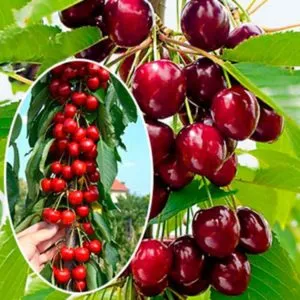
- Height up to 3 m even on wild rootstock;
- Straight trunk with minimal lateral branching;
- Vertically growing shoots;
- Dense, cylindrical crown that requires little shaping.
The berries are large, up to 3 cm in diameter, weighing 10–12 g on average, with glossy, firm, crack-resistant dark red skin. The flesh is deep red with pink veins, juicy, firm, and crisp, offering a bright, sweet, honey-like flavor.
Cold Hardiness and Drought Resistance
The variety tolerates temperatures as low as -28°C, and during flowering, it can withstand -2°C.
In drought conditions, the trees continue to grow, but water scarcity negatively affects fruit quality and yield.
Disease and Pest Resistance
Sylvia is resistant to pests and various diseases, including fungal infections.
Pollinators for the Variety
This is a self-sterile variety, so for fruit set and productivity, other sweet cherry varieties should be planted nearby. Best pollinators for Sylvia:
- Kordia;
- Lapins;
- Regina;
- Helena;
- Sam;
- Hedelfinger;
- Rainier;
- Ulster;
- Vega;
- Sumburst.
Flowering and Ripening Period, Yield
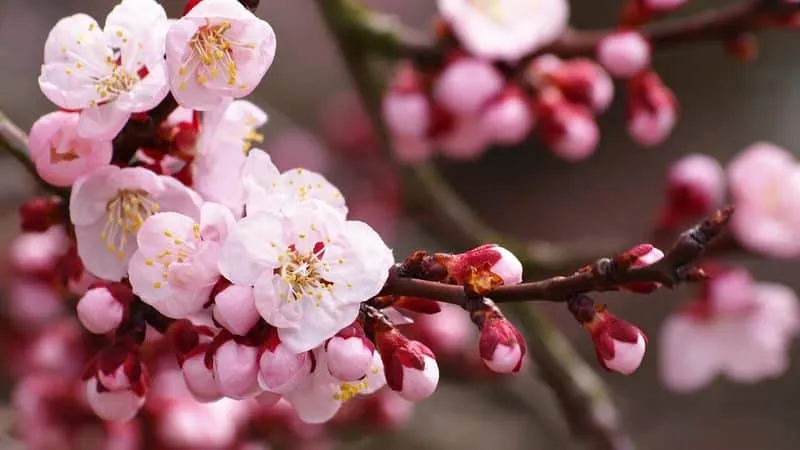
Flowering occurs in May, and the berries ripen in the first half of June (12th–18th).
Fruiting begins 2–3 years after planting and lasts for 7–10 days. In the third year, the yield is about 15 kg per tree, while mature trees produce up to 50 kg each. Due to high productivity, the trees' lifespan is a maximum of 15 years.
Note. In the first and second years, all fruit buds should be removed. This promotes better root development, as the tree does not expend energy on fruit production.
Pros and Cons
Key advantages of the variety:
- Compact size;
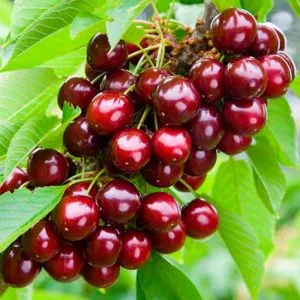
- Decorative appearance;
- Large fruit size;
- Excellent berry flavor;
- Cold resistance;
- Low-maintenance care.
Disadvantages of Sylvia:
- Intolerance to strong, cold winds;
- Moderate resistance to prolonged drought or waterlogged soil;
- Requirement for abundant sunlight;
- Cannot be grown near tall plants.
Planting Saplings
Sylvia thrives in light, loose soil with good aeration and moisture permeability. The best options are sandy loam, coarse sand, or loamy soils.
Choose a sunny, wind-protected location with deep groundwater (at least 2 m) and preferably on elevated ground.
Important! This variety dislikes transplanting, especially in the first 3–4 years.
When selecting saplings, opt for 1- or 2-year-old plants with a straight trunk, smooth bark, a healthy apical bud, and a well-developed root system free from rot or tissue damage.
Step-by-Step Planting Guide
In most cases, especially in northern regions, sweet cherries are planted in spring (April–May) after the risk of frost has passed. This allows the saplings to establish roots before winter.
Note. Autumn planting (late September–early October) is only suitable for southern regions where the plant can root and adapt before cold weather.
Planting instructions:
- Clear the planting area of debris a week before planting.
- Dig holes 60–80 cm deep and 80 cm wide.
- Fill each with a nutrient mix of excavated topsoil, 3–5 buckets of well-rotted manure, 210 g of phosphorus-potassium fertilizer, and 1 bucket of river sand.
- Water each hole generously (2 buckets per hole).
- After 7 days, add a root stimulator solution (e.g., RootBoost, Clonex).
- Drive a wooden stake into the center, leaving 50 cm above ground.
- Form a mound of nutrient soil in the hole.
- Place the sapling on it, spreading the roots evenly.
- Cover the roots with soil, ensuring no air pockets remain and the root collar sits 2–3 cm above ground.
- Tie the trunk to the stake.
- Tamp down the soil, water, and mulch with a 5 cm layer.
Thanks to the trees' compact size, dense planting (1 m apart) is possible.
Care Tips
Sylvia requires minimal maintenance. Key care practices include regular watering, fertilization, and pruning.
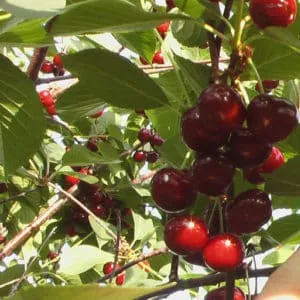
Watering
This is a moisture-loving crop: watering is crucial during fruit ripening. For the first 2 years, water as the soil dries, using 3–5 L per tree. Water needs increase with tree age.
Fertilization
Fertilize once a year. Young trees need 15–20 g of phosphorus and potassium mixed with compost. Mature trees require 50 g of balanced mineral fertilizer (e.g., NPK blends).
Pruning and Shaping
Though Sylvia does not need heavy pruning, shaping the crown and directing branches is important.
In the first year, trim the top and side shoots to 10 cm. The next year, shorten side branches to 20 cm and the top to 30 cm. In the third year, leave 30 cm.
Note. Once the tree reaches 2.5 m, pinch the top to halt further growth.
Pest and Disease Control
Sylvia has strong natural resistance. To enhance protection, spray with Bordeaux mixture before flowering and whitewash trunks with lime.
Harvesting and Storage
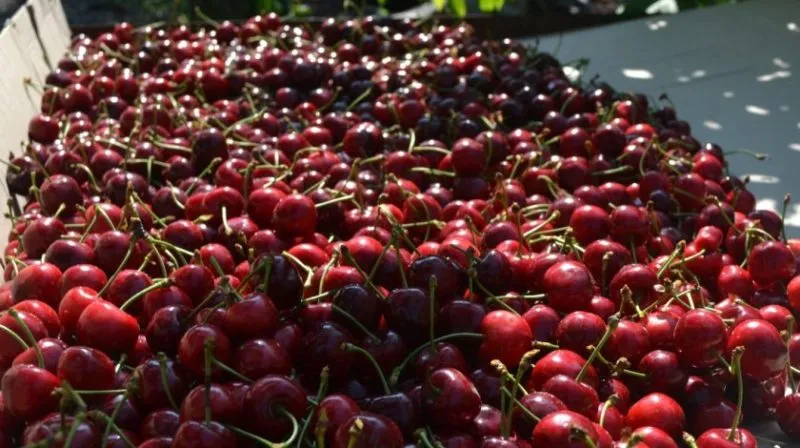
Harvest in mid-June. Pick berries with stems, starting from lower branches and moving upward.
The fruits resist cracking, transport well, and store for 7–10 days at room temperature or up to 3 weeks refrigerated.
Grower Reviews
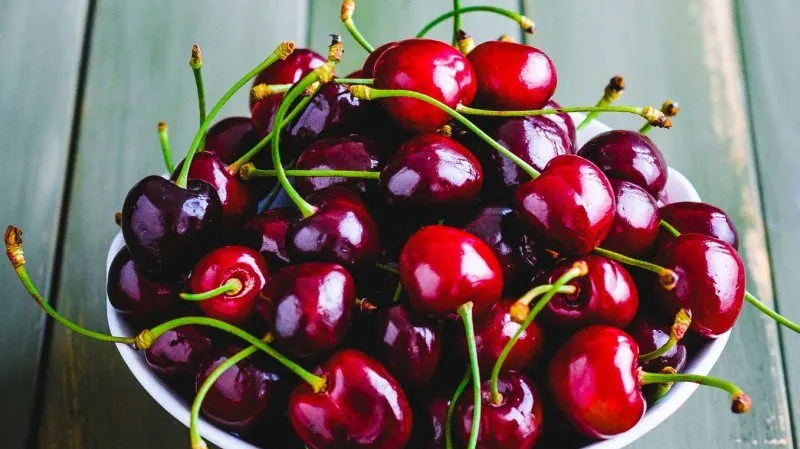
Gardeners who have grown Sylvia report mixed experiences. Online forums feature both praise and criticism.
Sophie, France: “We planted several columnar cherry varieties – Sylvia and Helena. They’ve grown well for 4 years, with no disease or pest issues. Watering is frequent due to our hot climate. The berries are delicious and large. Sylvia seems sweeter and larger-fruited. In the first harvest, we got a bucketful per tree.”
Thomas, Germany: “I planted Sylvia and Sam. For 3 years, they fruited excellently, but then Sylvia started spreading sideways, even the top. After pruning, yields dropped significantly.”
Conclusion
Compact columnar cherry trees are increasingly popular in private gardens. Sylvia is a prime example, loved for its cold resistance, low-maintenance nature, high yields, and large, sweet berries.







